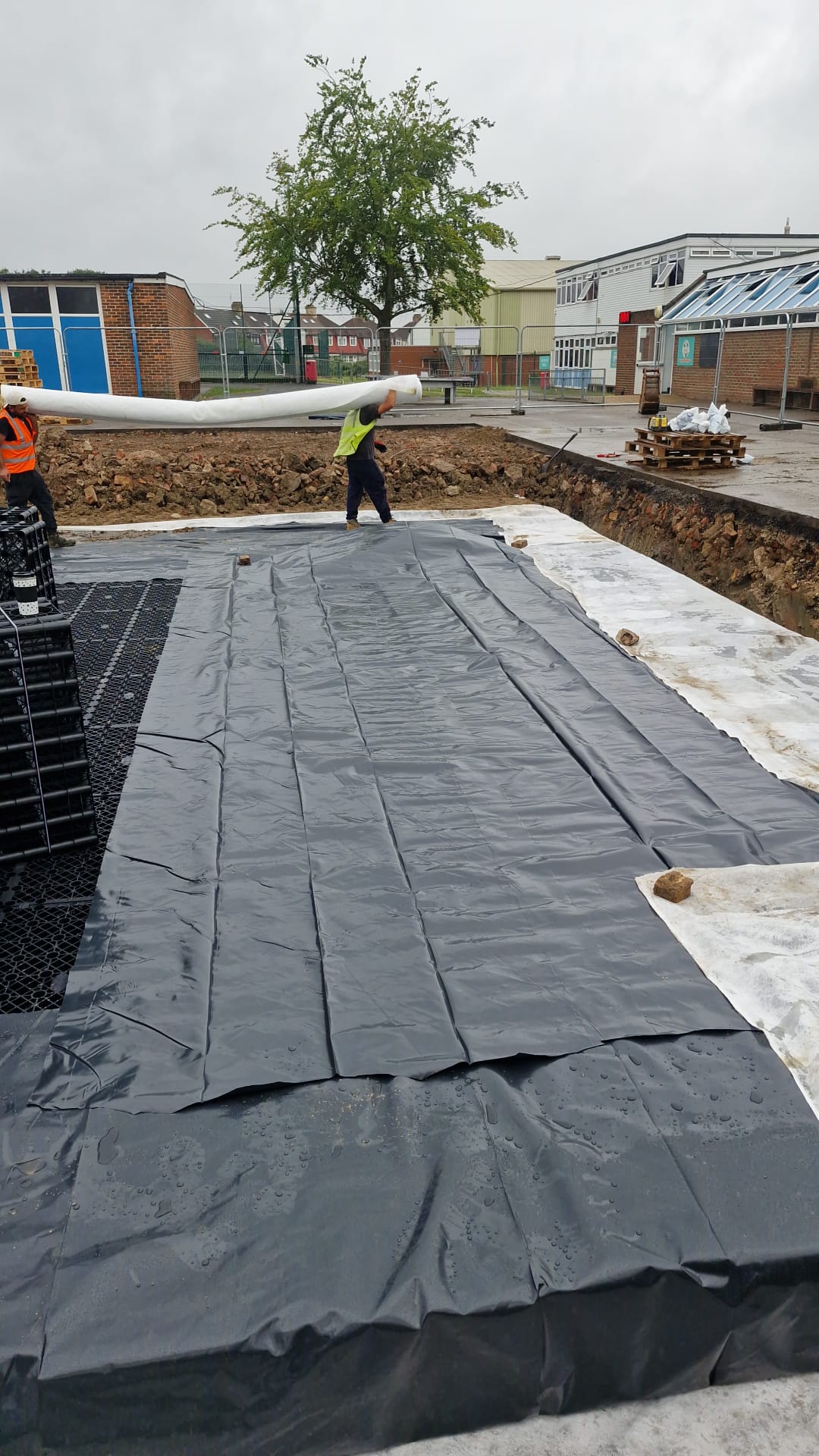Caterham High School Sustainable Drainage Project
SANDS Civil Engineering Consultancy Ltd was commissioned by Redbridge Council to investigate and design a sustainable drainage solution for Caterham High School, Ilford. The project was constructed by Kenson Highways under the Council’s management.
The project aimed to address long-standing surface water flooding across the school grounds. Our review of existing drainage revealed that the network had likely evolved over time and was now undersized for the site’s impermeable areas. Hydraulic modelling showed that even minor storm events caused localised flooding, while larger events led to significant ponding and exceedance flows. The Environment Agency Surface Water Flood Map confirmed the school sits in a high-risk flood area.
Catchment analysis identified the site as a topographical low point within a 0.7 million m² catchment. Overland flows enter the site from multiple directions, mainly from the northeast and southeast, converging towards the sports hall and southwest of the site. Further modelling indicated that under extreme storm conditions (1 in 100 year + 40% climate change allowance), flood depths could reach 180 mm within the site and up to 300 mm at site boundaries.
To manage these risks, SANDS developed a comprehensive flood mitigation strategy, including:
Internal Site Drainage Measures
-
Rain gardens to reduce surface water discharge and promote infiltration.
-
Attenuation tank providing on-site storage to reduce downstream flooding.
-
Flood-resistant construction measures, including barriers at key access points, sealed vents, and waterproofed external walls.
All interventions were designed in line with Sustainable Drainage Systems (SuDS) best practice and Lead Local Flood Authority (LLFA) guidance to ensure long-term resilience and maintainability.
The completed design has significantly improved surface water management, reduced flood risk, and enhanced the safety, functionality, and sustainability of the school grounds.
- 175m³ of on-site surface water storage, including:
- A 160m³ cellular attenuation tank
- 3 water butts (1,000L each)
- 5 planters connected to downpipes
- 1 rain garden enhancing biodiversity and infiltration
Category : Civil Engineering





